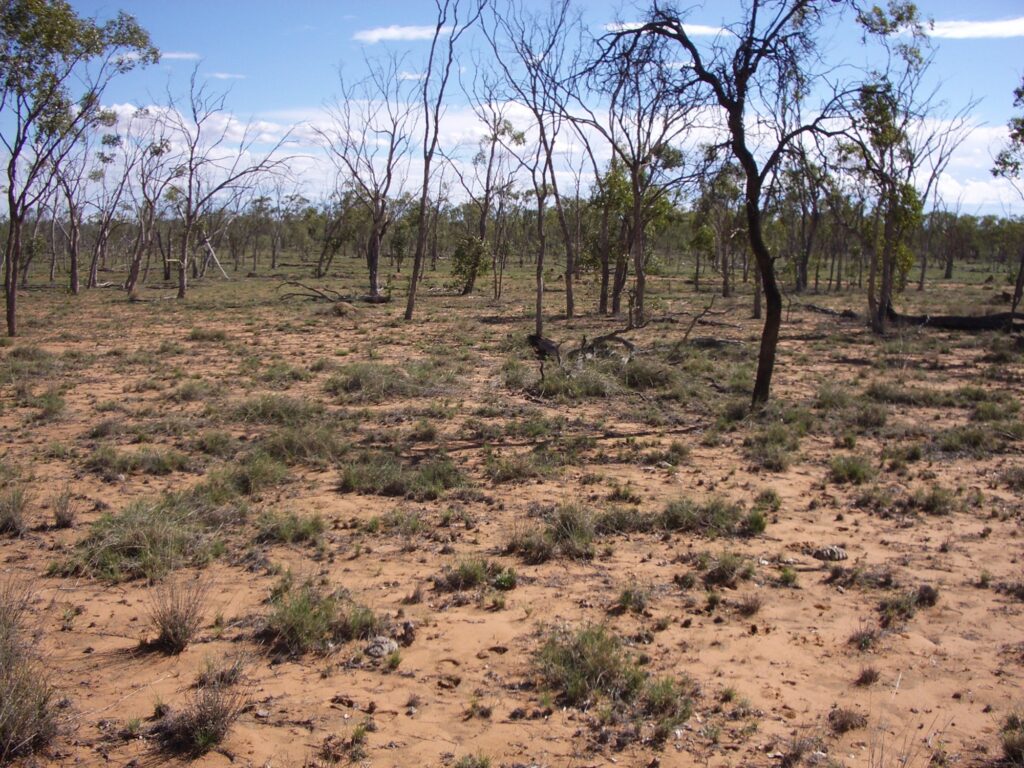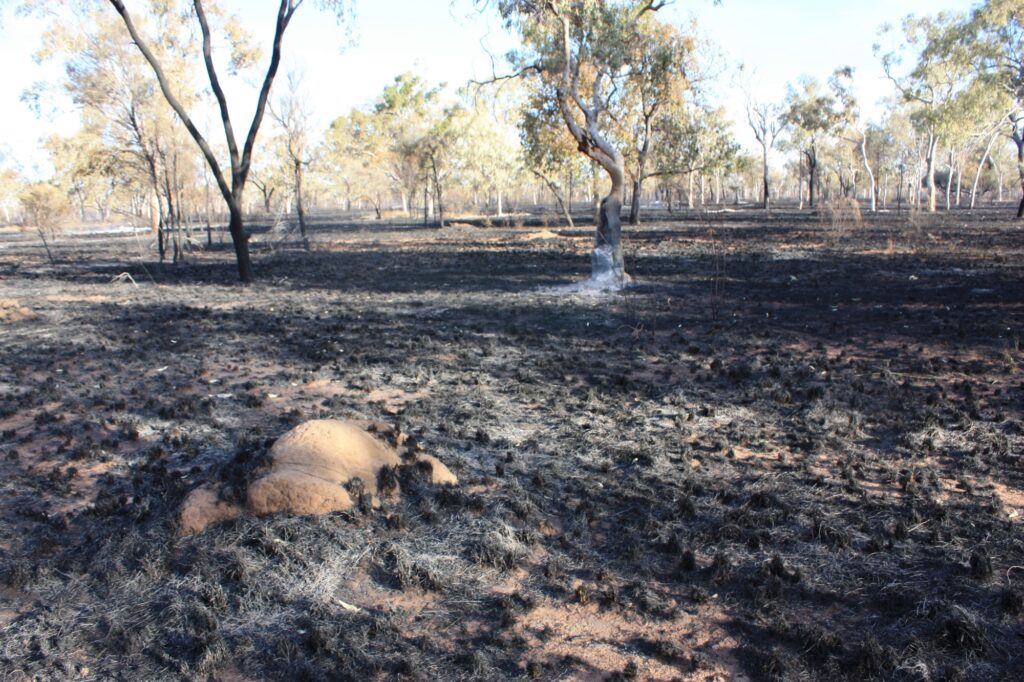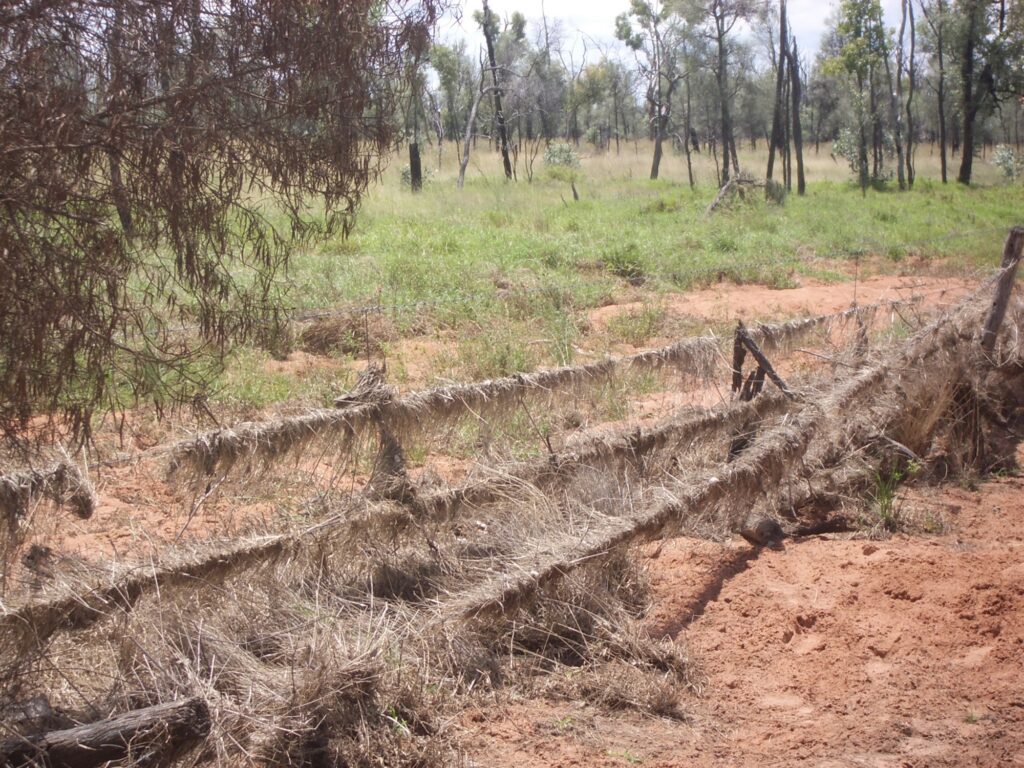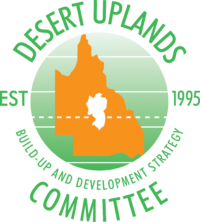
In the Desert Uplands, we know it gets dry, we know we have fires, we know we have floods. This trilogy can at times occur sequentially, compounding to become quite disastrous. When big floods follow long drys, the native grasses grow a lot of bulk, especially as there are fewer stock and kangaroos after the drought. This tall grass dries off to become the fuel for wildfires, often ignited by early dry electric storms. Early nineteenth century history tells of men and horses dying in attempts to control fires. In our last decade, again this trilogy played out with much loss and anguish across swathes of the Desert Uplands.
Image: Droughted pastures after a small summer shower

To gather the learnings from the many bioregional land managers that have experienced these natural adversities, the Desert Uplands Committee worked up a project that involved professional extension staff talking with land managers about these experiences. The oral stories and learnings came from over twenty graziers with a wide range of involvement in, practices and responses before, during and after these climatic extremes.
Image: Burnt out paddock

These narratives were directed and compiled by Col Paton and Russ Tyler (as the interviewer and collector), with the resultant published book edited and designed by Ian Partridge. Background science in livestock production, pasture management and related subjects is provided to help explain, reinforce and further detail this collection of first-hand landholder knowledge. The booklet documents the broad learnings and experiences of landholders who have survived and thrived through these excesses; it aims to help all those who will face these difficult conditions again.
Free copies can be obtained by requesting by email to info@desertuplands.org.au
Image: After the flood
